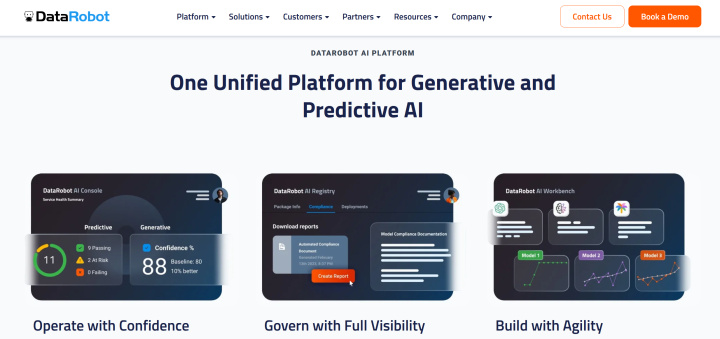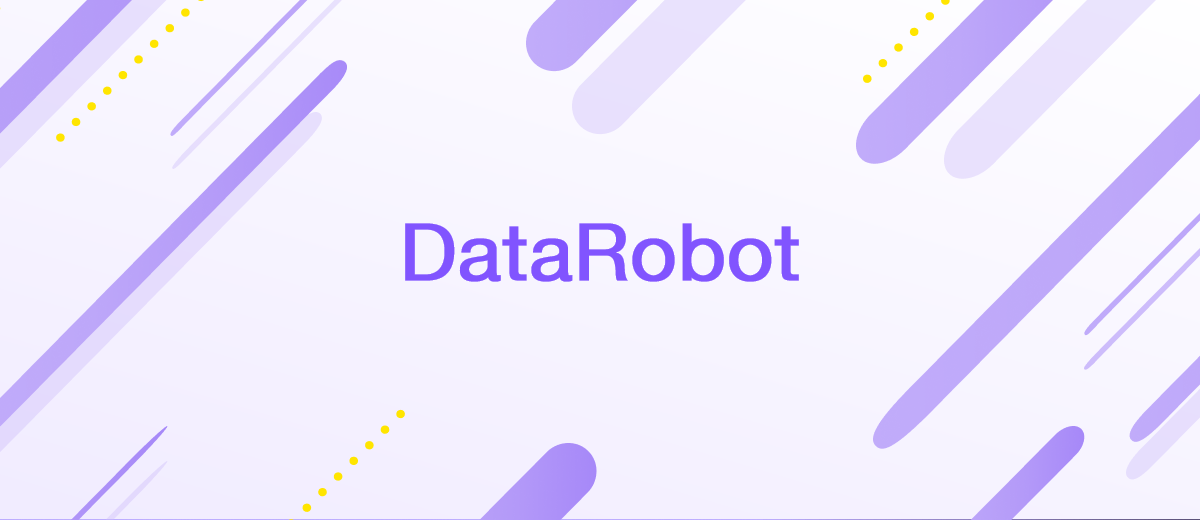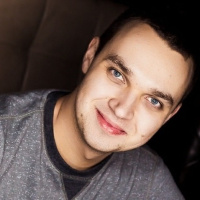DataRobot: Powerful Automated Machine Learning Platform
Data processing and AI/ML model training services are among the fastest growing categories of modern IT products. One of them has been successfully operating for over 10 years, during which time it has released over 3.7 billion models and collected over $1 billion in investments. In this article, we will tell you what DataRobot is and what tools it has, as well as its advantages and areas of application.
Understanding DataRobot
DataRobot is a machine learning platform for developing predictive models and solving other data-related problems. It supports, automates, and accelerates analytics and forecasting workflows by helping data scientists train, build, and deploy specialized algorithms. The platform optimizes and simplifies the use of the most in-demand modeling technologies. DataRobot contains a number of open-source machine learning libraries based on R and Python, including scikit-learn, H2O, TensorFlow, Vowpal Wabbit, Spark ML, and XGBoost.
Powerful functionality is easily managed via a drag-and-drop interface, allowing you to prepare and run complex predictive models without deep knowledge of AI/ML or coding. The program effectively automates the selection of optimal functions, algorithms, and parameter values for building models. By automatically selecting best practices and methods to solve specific user problems, it is also flexible and scalable, allowing machine learning engineers to carefully tune and analyze models to obtain the information they need.
The company that launched the platform was founded in 2012 by Jeremy Achin and Tom de Godoy. Debanjan Saha has been DataRobot CEO since 2022. The company's goal is to democratize AI technologies, making them accessible to a mass audience. The developers set the task of creating a tool to automate all stages of the process of creating AI/ML algorithms — from data preparation to model deployment. Over the years of its activity, the company has received $1 billion in investments during 11 rounds of financing. The latest tranche at the time of writing was $300 million during Series G in 2021.
The company has been supported by nearly 50 investors, including Salesforce Ventures, BlackRock, Tiger Global Management, Morgan Stanley, Snowflake, and others. As of 2024, DataRobot's estimated value is $6.3 billion, and its staff is ~1,000 people. According to the developers, the total number of ML models released by the platform has reached 3.74 billion, with 2.5 million models created daily. In the next section of the article, we will talk about what DataRobot does and what functions are available to it.
Core Functionalities

The company provides a wide range of automated machine learning tools that are in high demand among data scientists and business analysts. They accelerate and optimize the processes of moving, profiling and analyzing prepared data; help to explore, train, configure and combine algorithms; and develop, test and implement predictive models.
DataRobot's capabilities can be divided into several categories, namely:
Preparation and testing
- Data preparation. Connecting data from different sources, analyzing their quality, designing and storing functions.
- Development and optimization: Using structured and unstructured data to train modeling strategies.
- Sharing insights and making decisions. Assessing the performance of ready-made models, sending personalized offers to key influencers.
Production
- Validation and resource management. Creating a centralized data warehouse for all created models allows for streamlining their testing, approval, and automation of document flow.
- Deployment and integration: A variety of available deployment options and a wide range of integrations with external systems provide broad possibilities for implementing models.
- ROI monitoring and analysis. Comprehensive analysis of model indicators, ROI assessment, search for potential errors in real time in any hosting environment.
Ecosystem
- Integrations: Sync with external data stores, machine learning interfaces, workflow utilities, business intelligence tools, and a range of business applications.
- Deployment infrastructure. DataRobot generative AI platform provides high flexibility to deploy models in public, private or managed SaaS clouds.
Additional products
- No-code app builder. Allows you to develop custom apps without special skills via a drag-and-drop interface.
- Automated Time Series: This feature allows users to create accurate time series models.
- DataRobot University. Proprietary training program with courses and certificates in AI and ML.
Benefits of Using DataRobot
DataRobot overview would be incomplete without a description of the key advantages of the company's products. Moreover, there are quite a few of them, and from different directions. Below, we will tell you about the most important and priority ones:
Functionality
- Built-in machine learning mechanisms automate the process of identifying and optimizing data patterns, which reduces the time and other resources required for predictive modeling.
- The platform provides an efficient feedback loop between data preparation and ML model building.
- The optimized AutoML feature automatically determines the best machine learning model for a given dataset.
Interface and usability
- A user-friendly interface with version control and flexible data visualization helps you easily build, deploy, and customize models to produce accurate predictions.
- DataRobot's basic tools are easy for most users to learn without any special training or additional technologies.
- The platform's graphical user interface (GUI) is intuitive and easy to read, and not just for technical specialists.
Collaboration
- Teams can conveniently and securely store all information on current projects in shared folders hosted in the cloud.
- All authorized participants have the ability to view, comment and work on projects.
- The platform allows you to use existing data to launch new projects and train staff.
- It allows you to keep a constant record of project tasks and activities in real time.
Data processing and analysis
- DataRobot AI platform helps to significantly speed up and improve the quality of processing structured and unstructured data.
- Data analysis tools based on artificial intelligence technologies generate detailed reports on key parameters.
- The system's functionality provides simple and clear configuration of data sets within the application.
Training and documentation
- The proprietary knowledge base contains a comprehensive set of training materials, including video tutorials, explanations of key concepts, and workflow overviews.
- UI documentation allows you to study all aspects of working with DataRobot: from data import to deployment and model management.
- The API documentation provides detailed instructions on creating and managing models via the API via REST or with DataRobot Python/R clients on Windows, UNIX, and OS X environments.
- The Administrator's Guide provides resources for monitoring and coordinating accounts.
- Releases help users learn about new platform tools, access publicly available preview documentation, and get detailed instructions for deprecated features.
Data protection
- Recognizes and prevents common mistakes made by new data scientists.
- Tracks and maintains records of metadata, algorithms and parameters.
- Preserves and protects project data when the personnel working on it change.
- Ensures accuracy in the selection of algorithms and parameters.
User Experience and Application

The automated machine learning platform has a clear and functional web interface. With its help, users can create and deploy complex predictive models without lengthy preparation, working with ready-made components in a drag-and-drop designer. Not only technical experts, but even employees without knowledge of machine learning and programming, can fully use its tools. The platform is actively used by data specialists, IT specialists and business analysts.
The AI and machine learning models developed here help companies and organizations optimize business processes and make more effective decisions. DataRobot's capabilities are in high demand among enterprises from various business sectors, including retail, financial services, manufacturing, healthcare, etc. The most famous users of the platform include such well-known brands as United Airlines, Deloitte, Harmoney, Stanley Black & Decker, Blue Health Intelligence, Panasonic, LendingTree, Harvard Business School, Blue Cross Blue Shield and many others.
DataRobot AI is especially useful for:
- Experienced data scientists. Here they have access to a large library of the latest algorithms and ready-made prototypes for data preparation and feature extraction. Automatic assembly allows you to select and combine multiple algorithms to quickly create more accurate predictive models.
- Beginner data scientists. The system provides simple and effective methods for processing and analyzing data. It also provides automatic selection of functions, algorithms, and parameter values for building a model from scratch.
- Business data analysts. The platform's rapid transition from reporting to forecasting expands the analytical capabilities to enable more complex and large-scale modeling tasks.
- Top managers and business owners. Its capabilities help reduce risks, costs and payback time, as well as faster and more accurate decision-making.
Conclusion
With DataRobot, companies of all sizes and industries are discovering the many benefits of predictive analytics. This powerful and versatile tool provides great support to business analysts and data scientists. With its help, they can perform a number of key tasks much faster and more efficiently: from profiling input data to developing algorithms and quickly deploying applications. Ultimately, this significantly accelerates the processes of data processing and training AI/ML models, as well as the implementation of the latter into current business processes.

